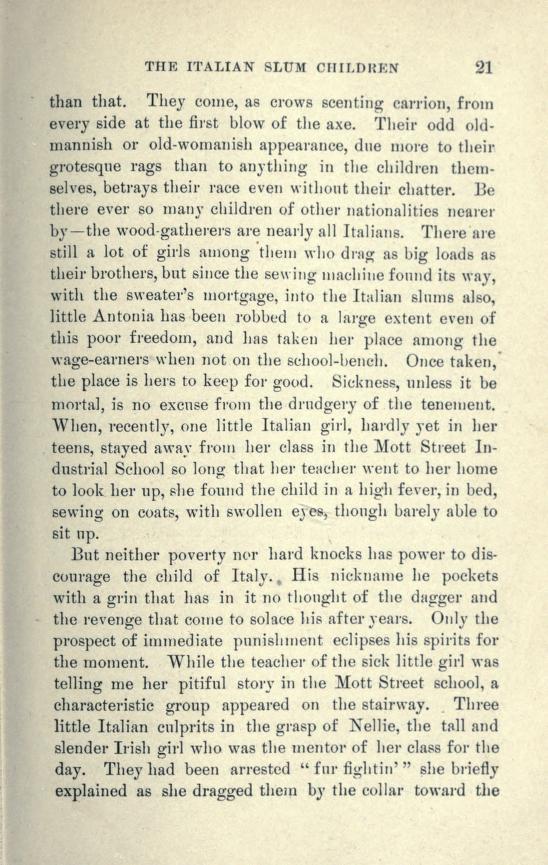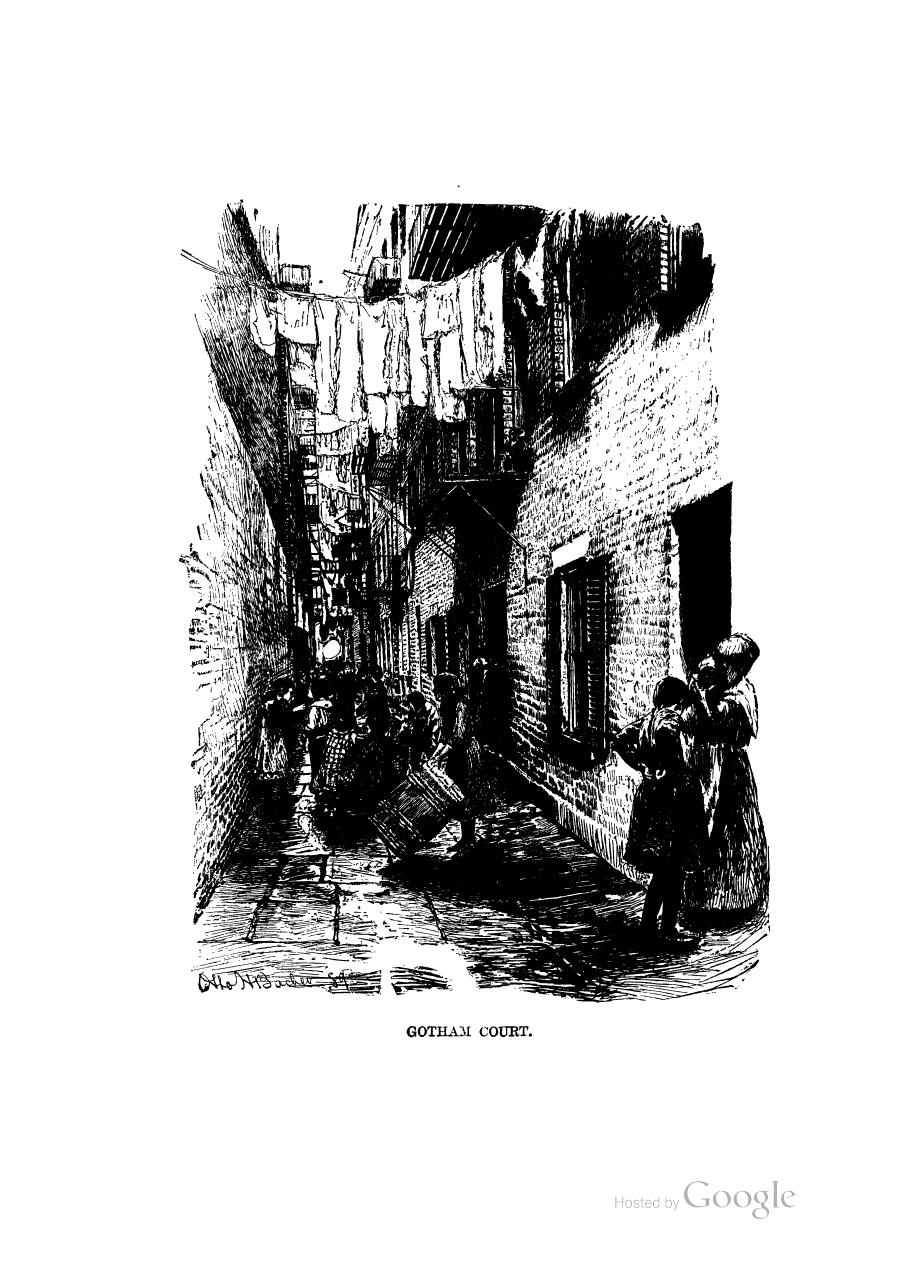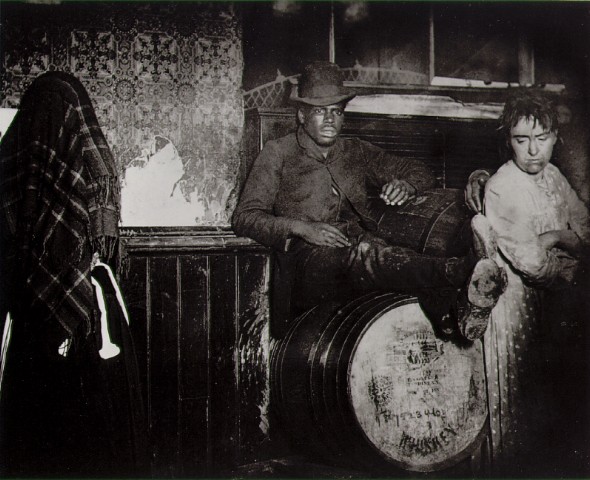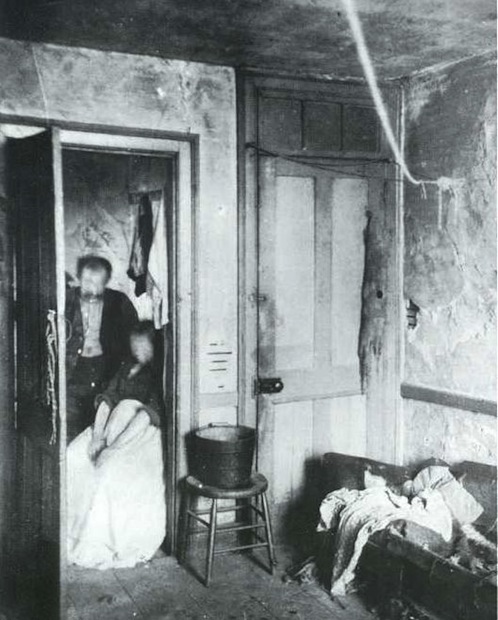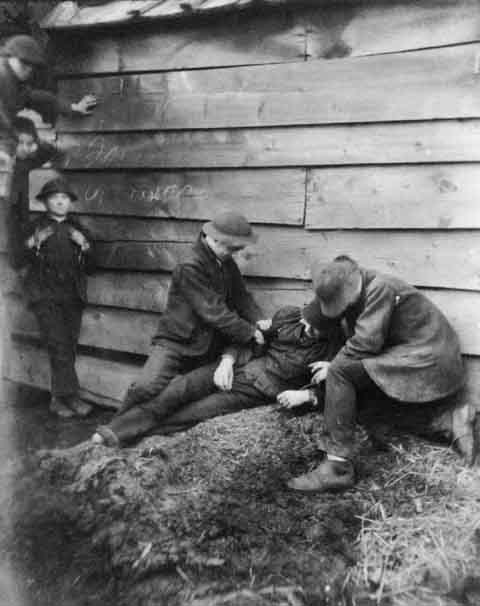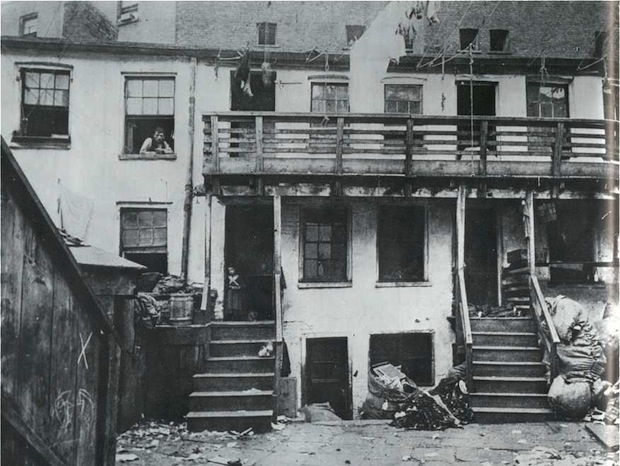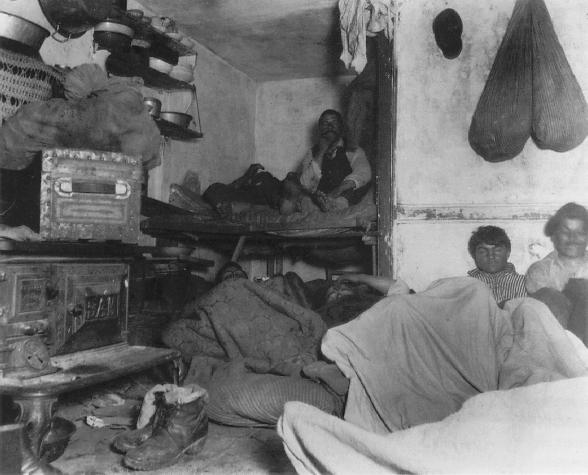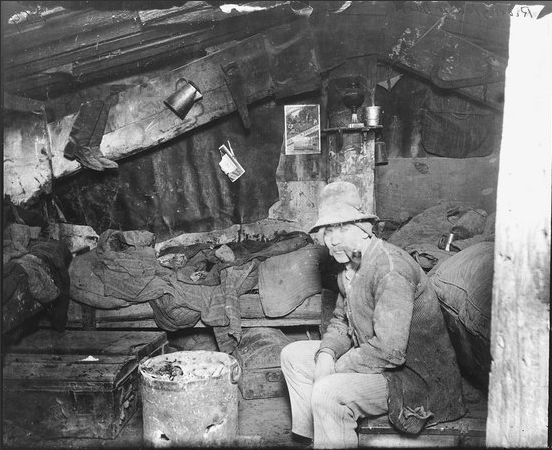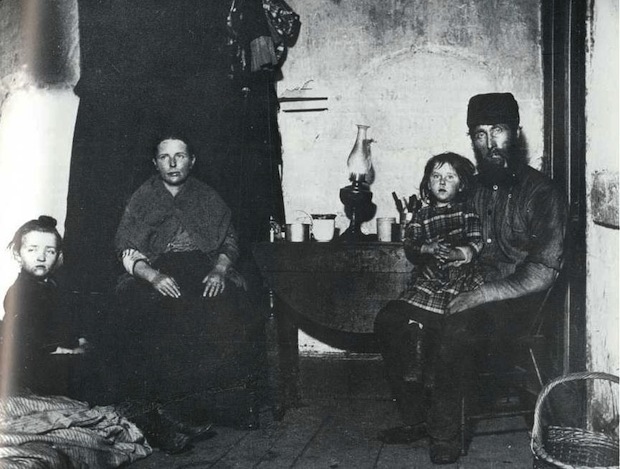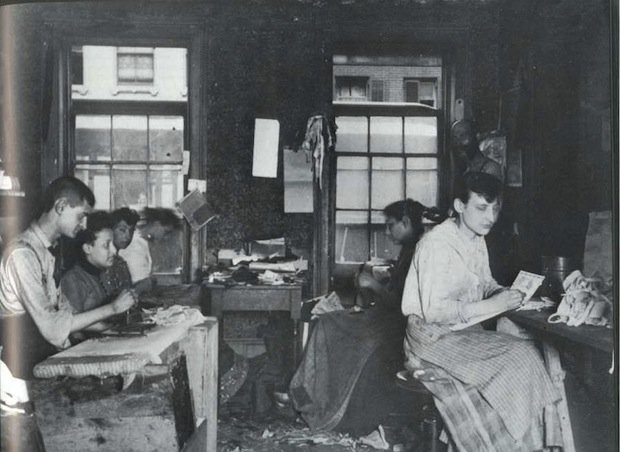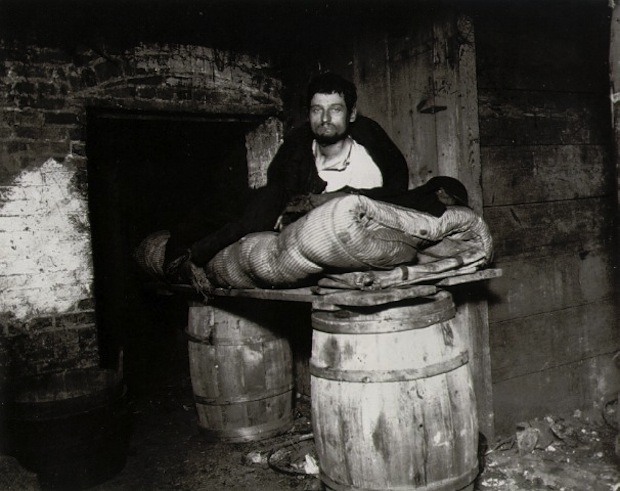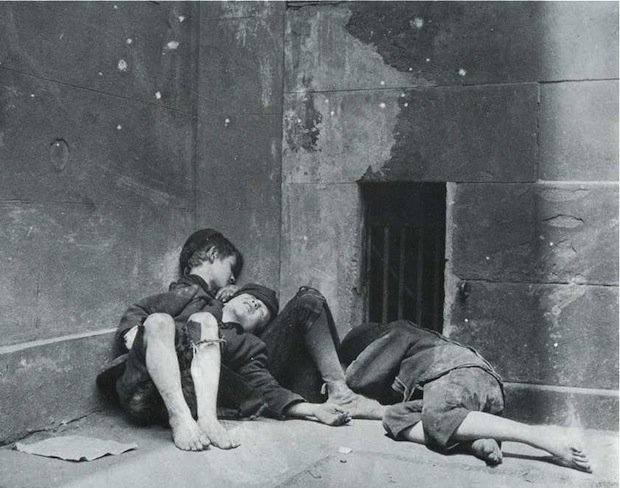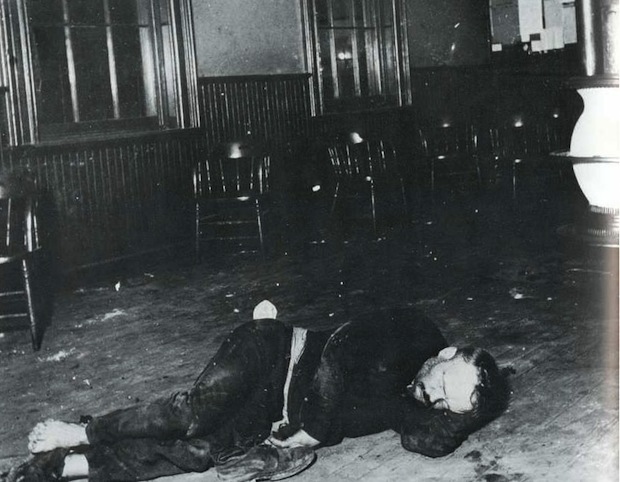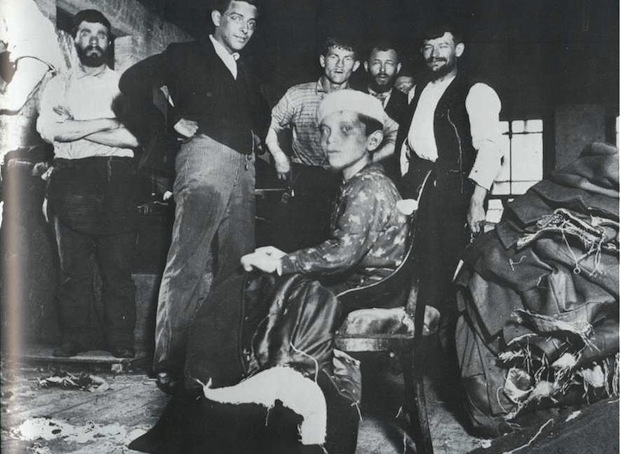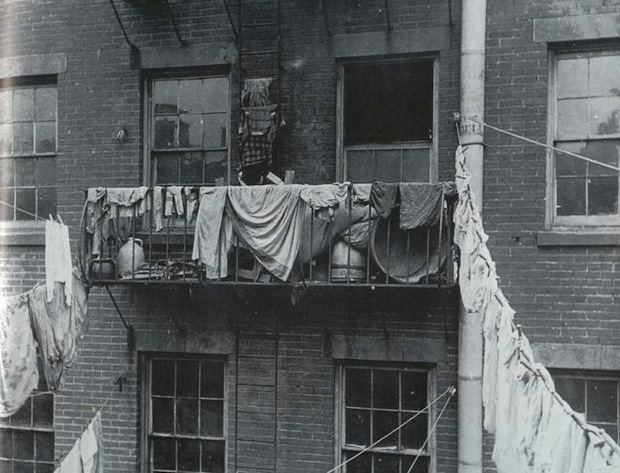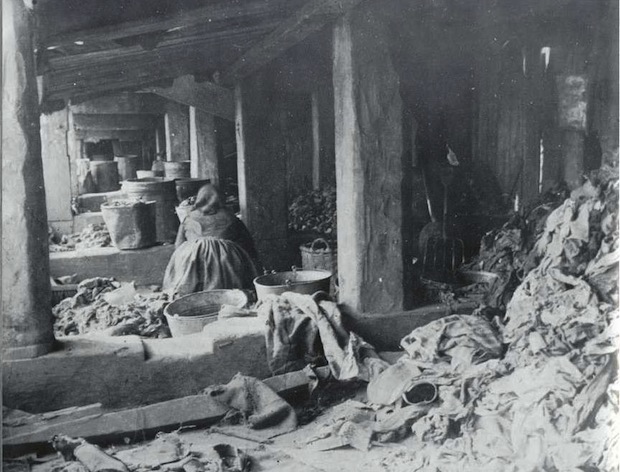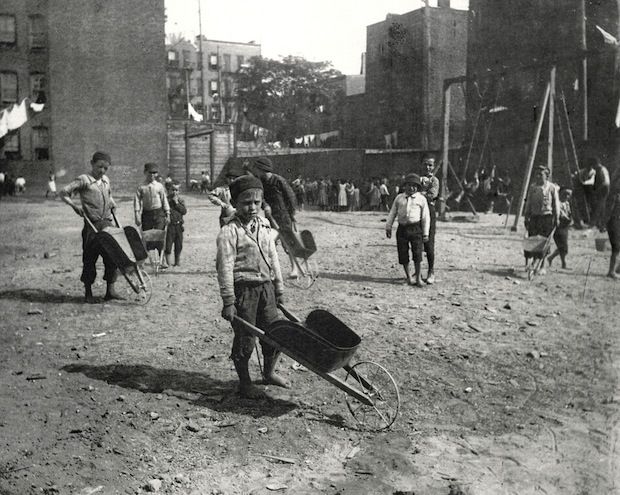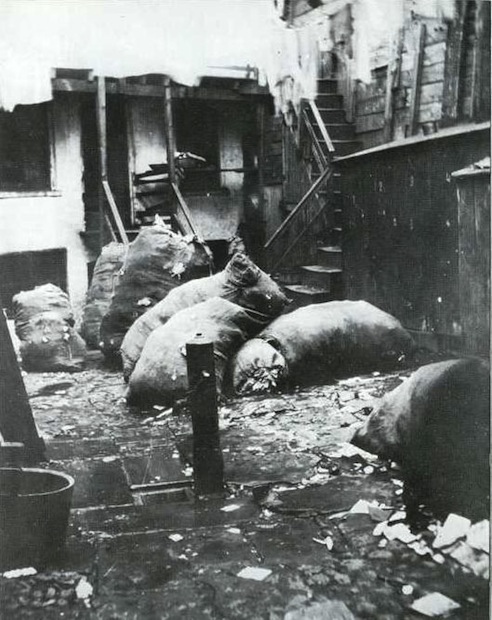By Anne M. Filiaci, Ph.D.
Riis began to use journalism as a tool to advocate for reform during a period when tremendous population growth had begun to exacerbate already horrible living conditions for the poor in New York City. By 1894, the City had become “the most densely crowded city…that the world had ever seen.” At that time, four-fifths of New York City’s inhabitants resided in tenements, “great prison-like structures of brick…with narrow doors and windows, cramped passages and rickety stairs,” and windowless halls that were “dark and very dark” both day and night.
" order_by="sortorder" order_direction="ASC" returns="included" maximum_entity_count="500"]New York’s corrupt Tammany government did little to improve the situation. There were few housing regulations and those that existed were seldom enforced. Because of shoddy building practices and inadequate regulation, tenement dwellings were at constant risk for fire. They were also public health nightmares. Most had only outdoor privies, and lacked an adequate water supply for cleaning, cooking and bathing. The absence of running water—combined with overcrowding, the lack of regular trash removal or street cleaning, and the abundance of rodents and insects—made tenement neighborhoods breeding grounds for contagious and potentially deadly diseases like tuberculosis, smallpox, scarlet fever, meningitis, diphtheria and pneumonia.
In 1884, Riis reported on a popular series of lectures about the tenement housing crisis, given by Felix Adler, founder of the New York Society for Ethical Culture. Adler’s talks shocked his audiences, causing a public outcry about the dangers of tenement living and the need for housing reform. The New York state legislature responded that same year, establishing the Drexel Commission on tenement housing. Adler was named one of the commissioners. Riis covered the commission’s hearings, and later credited Adler’s work with inspiring him to become a lifelong advocate for better housing for the poor.
In the late 1880s, Riis became one of the first journalists to use flash photography, a method that had only recently become technically feasible (and still carried a very real risk of explosion). The equipment allowed him to take pictures of formerly undocumented dark spaces—tenement hallways, alleyways, and night life—making visible the most miserable corners of the neighborhoods. He was soon using these pictures to enhance his articles. He also took to the lecture circuit, illustrating his talks with the pictures he had taken.
In 1889 he published an essay on city life in Scribner’s Magazine, accompanying his words with his photos. Asked to prepare a full-length illustrated book on the subject, in 1890 he published How the Other Half Lives, the groundbreaking work that made him famous.
Riis continued his efforts to use photojournalism to publicize the plight of the poor and to advocate for reform. A passionate advocate for children’s rights, he published The Children of the Poor in 1892. In this book he argued for strong and enforceable laws that promoted compulsory education and prohibited child labor. Using anecdotes and photographs that detailed the working and living conditions of New York City’s children, his book showed that while the city and state had passed its share of child labor and compulsory education statutes, weak enforcement of these laws meant that poor children could be found working day and night throughout the city in factories, on the streets, in tenement sweatshops, and in their own homes.
By 1894, Riis’s influence on housing matters had expanded beyond journalism, when he was tapped to serve as unofficial advisor to another Tenement House Committee, also established by the New York State Legislature (known also as the Gilder Committee). In this capacity, he encouraged committee members to look beyond the narrow confines of tenement housing and to advocate for the building of parks, playgrounds, kindergartens and other public spaces that would improve the environment of tenement neighborhoods in general. Riis also successfully urged the committee to look to other cities for examples of urban planning, draw up a map of New York showing ethnic neighborhoods and compile statistics on housing. He persuaded them to consult not only with various experts and reform advocates—trade unionists, health officials, and settlement workers—but also with representatives among the poor themselves.
In the ten years between the two legislatively-sponsored tenement hearings, the possibilities for effective reform had improved significantly. By the time Riis started advising the Gilder committee, he no longer had to be satisfied by “scattered efforts of reform” that relied solely on the efforts of a small “band of guerrillas.” These few brave souls had now been joined by many others. Riis welcomed this influx, and acknowledged that settlements in particular had provided reformers with a large, organized and focused group of allies who lived and worked in the very neighborhoods they sought to improve. These neighborhood houses, populated with idealistic young men and women, were to Riis the “fulcrum” from which “the lever for reform was applied.” He wrote:
“If parks were wanted, if schools need bettering the College Settlement, the University Settlement, the Nurses’ Settlement, and …a score of other such places, [had] young enthusiasts to collect the facts and to urge them, with the prestige of their non-political organization to back them.”
Illustrations:
See the following links for electronic copies of Riis’s books, including illustrations:
Riis, Jacob, The Children of the Poor, New York, Charles Scribner’s Sons, 1908 (c1892) (Wald9, Riis, Children of the Poor) Link to Illustration (openlibrary.org) Current September 3, 2014
Riis, Jacob, How the Other Half Lives: Studies Among the Tenements of New York, New York, Charles Scribner’s Sons, 1890. Several fulltext copies online, including Link to Illustration , current September 3, 2014
See also:
Digitization of photos in Riis, Jacob, How the Other Half Lives: Studies Among the Tenements of New York at PetaPixel. (“Established in May of 2009, PetaPixel is a leading blog covering the wonderful world of photography. Our goal is to inform, educate, and inspire in all things photography-related.” Link to Illustration current 6/5/14
Also see results from Google Images search, “how the other half lives,” Link to Illustration current 6/5/14
“Jacob A. Riis’s New York,” slide show by New York Times, at Link to Illustration current 6/5/14
Copyright Anne M. Filiaci 2016
